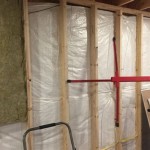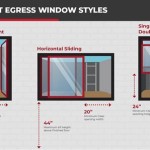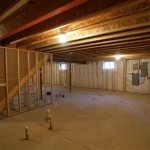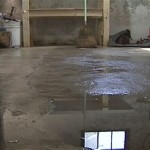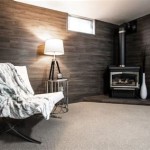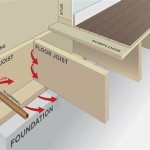How to Insulate the Floor Above a Basement: A Comprehensive Guide
Insulating the floor above a basement represents a significant opportunity to improve a home's energy efficiency, enhance comfort, and reduce heating and cooling costs. A poorly insulated floor allows heat to escape during winter and cool air to dissipate during summer, leading to increased energy consumption and temperature fluctuations in the living space above. This article provides a detailed guide on how to effectively insulate the floor above a basement, covering various insulation materials, installation methods, and considerations for optimal performance.
Understanding the Benefits of Basement Floor Insulation
Before embarking on the insulation project, it’s crucial to understand the specific advantages it offers. Effective insulation minimizes heat transfer between the basement and the living space above. In winter, this prevents heat from escaping from the upstairs rooms into the colder basement. Conversely, in summer, it helps keep the upstairs cool by blocking heat radiating from the basement. This leads to several tangible benefits:
Reduced Energy Bills: By minimizing heat loss and gain, insulation lessens the strain on the HVAC system, resulting in lower energy bills. The amount of savings will vary depending on the climate, the existing insulation levels in other parts of the house, and the efficiency of the heating and cooling systems. However, consistent energy savings are almost always observed after proper insulation.
Improved Comfort: A well-insulated floor eliminates drafts and cold spots in the rooms above. This creates a more consistent and comfortable temperature throughout the house, particularly during extreme weather conditions. Furthermore, insulation helps to dampen sound transmission between the basement and the living space, creating a quieter and more peaceful environment.
Moisture Control: Some insulation materials, particularly closed-cell spray foam, can act as a vapor barrier, preventing moisture from rising from the basement into the living space above. This is especially important in basements that are prone to dampness or humidity. Controlling moisture reduces the risk of mold growth, wood rot, and other moisture-related problems.
Increased Home Value: Energy-efficient homes are increasingly desirable to homebuyers. Investing in insulation, particularly a project as impactful as insulating the floor above the basement, can increase the home's market value and make it more appealing to potential buyers.
Selecting the Right Insulation Material
Choosing the appropriate insulation material is a critical step in the process. Several options are available, each with its own advantages and disadvantages. The selection should be based on factors such as the R-value (resistance to heat flow), cost, ease of installation, moisture resistance, and fire resistance.
Batt Insulation (Fiberglass or Mineral Wool): Batt insulation is a common and relatively inexpensive option. Fiberglass batts are made from spun glass fibers, while mineral wool batts are made from rock or slag. Both are available in various thicknesses and R-values. Batt insulation is easy to install in open joist bays, but it may require cutting and fitting around pipes and wiring. Ensure proper installation to avoid gaps or compression, which can significantly reduce its effectiveness.
Rigid Foam Board Insulation (Polystyrene or Polyisocyanurate): Rigid foam boards provide a higher R-value per inch compared to batt insulation. They are available in various types, including expanded polystyrene (EPS), extruded polystyrene (XPS), and polyisocyanurate (polyiso). Rigid foam boards are moisture-resistant and can be cut to fit snugly between joists. They are often used in conjunction with other insulation materials to create a more comprehensive insulation system. Polyiso offers the highest R-value per inch among rigid foam boards.
Spray Foam Insulation (Open-Cell or Closed-Cell): Spray foam insulation offers excellent air sealing and insulation properties. Open-cell spray foam is less expensive and has a lower R-value, while closed-cell spray foam has a higher R-value and acts as a vapor barrier. Spray foam expands to fill cracks and crevices, creating a tight seal that prevents air leakage. However, it requires professional installation and is generally more expensive than other insulation options. Closed-cell spray foam is particularly effective in basements prone to moisture.
Loose-Fill Insulation (Cellulose or Fiberglass): Loose-fill insulation is made from recycled paper (cellulose) or fiberglass fibers. It is typically blown into enclosed cavities using specialized equipment. While it can be used to insulate the floor above a basement, it is generally less common than batt or spray foam insulation. Proper ventilation is crucial to prevent moisture buildup with cellulose insulation.
Installation Techniques for Basement Floor Insulation
The installation method will depend on the type of insulation material chosen and the construction of the floor joists. Careful preparation and attention to detail are essential for achieving optimal results.
Preparing the Joist Bays: Before installing any insulation, thoroughly inspect the joist bays for any signs of moisture damage, mold, or pests. Address any issues before proceeding. Clean the joist bays to remove any debris, dirt, or cobwebs. This ensures proper adhesion and prevents the insulation from becoming contaminated.
Installing Batt Insulation: Cut the batt insulation to fit snugly between the joists. It is crucial to avoid compressing the insulation, as this reduces its R-value. Friction fit the batts between the joists, ensuring that they are flush with the bottom of the joists. For added support, use insulation support wires or chicken wire to hold the batts in place. Wear appropriate safety gear, including gloves, a dust mask, and eye protection, when handling fiberglass or mineral wool insulation.
Installing Rigid Foam Board Insulation: Measure the distance between the joists and cut the rigid foam boards to fit snugly. Seal the edges of the foam boards with caulk or foam sealant to prevent air leakage. Use construction adhesive or screws to secure the foam boards to the underside of the subfloor. Ensure that all seams and gaps are properly sealed. Consider using a foil-faced foam board for enhanced thermal performance.
Installing Spray Foam Insulation: Spray foam insulation requires professional installation. A qualified installer will apply the foam to the underside of the subfloor, filling all cracks and crevices. Ensure that the installer uses appropriate safety precautions and ventilation during the application process. Follow the manufacturer's instructions for curing and ventilation after installation.
Addressing Obstructions: Plumbing pipes, electrical wiring, and ductwork often run through the joist bays. Carefully cut and fit the insulation around these obstructions, ensuring that there are no gaps or voids. Seal any gaps with caulk or foam sealant. Consult with a qualified electrician or plumber if you are unsure how to properly insulate around these obstructions.
Additional Considerations for Insulation Projects
Beyond the core selection and installation, several other factors can significantly impact the overall effectiveness and safety of the basement floor insulation project.
Vapor Barrier Considerations: In colder climates, a vapor barrier may be required to prevent moisture from condensing within the insulation. However, in warmer climates, a vapor retarder may be more appropriate to allow some moisture to escape. The need for a vapor barrier depends on the climate, the type of insulation used, and the construction of the building. Consult with a building professional to determine the best approach for your specific situation. Closed-cell spray foam typically acts as its own vapor barrier.
Fire Safety: Ensure that the insulation material meets local building codes and fire safety standards. Some insulation materials are more fire-resistant than others. Consider using fire-resistant coatings or barriers to enhance the fire safety of the insulation system. Pay particular attention to fire safety when insulating around chimneys or other heat-producing equipment.
Ventilation: Proper ventilation is essential for preventing moisture buildup in the basement. Ensure that the basement is adequately ventilated to prevent condensation and mold growth. Consider installing a dehumidifier if the basement is prone to dampness or humidity. Regularly inspect the basement for any signs of moisture damage.
Professional Consultation: If you are unsure about any aspect of the insulation project, consider consulting with a qualified building professional or insulation contractor. They can provide expert advice and guidance on selecting the appropriate insulation material, installing it correctly, and addressing any specific challenges. A professional inspection can identify potential problems and ensure that the insulation project is completed safely and effectively.
Budgeting and Cost Estimates: Before starting the project, obtain cost estimates from multiple suppliers and contractors. Compare the costs of different insulation materials and installation methods. Factor in the cost of materials, labor, tools, and equipment. Consider the long-term energy savings and the potential increase in home value when evaluating the cost-effectiveness of the insulation project.
By carefully considering these factors and following the guidelines outlined in this article, homeowners can successfully insulate the floor above their basements, creating a more comfortable, energy-efficient, and valuable living space.

Insulating And Finishing An Old Basement Floor Fine Homebuilding

Installing Rigid Foam Above A Concrete Slab Greenbuildingadvisor
Floor Above Unconditioned Basement Or Vented Crawlspace

What S The Best Way To Insulate A Basement Slab Greenbuildingadvisor

3 Tips For Cold Floors Above Crawl Spaces Basements

How To Insulate Cold Floors Fine Homebuilding

Keeping The Heat In Section 6 Basement Insulation Floors Walls And Crawl Spaces

Floor Above Unconditioned Basement Or Vented Crawlspace Building America Solution Center

How To Insulate Your Existing Concrete Slab With Halo S Interra In 5 Easy Steps Buildwithhalo Com

How To Insulate A Raised Floor Greenbuildingadvisor
Related Posts

